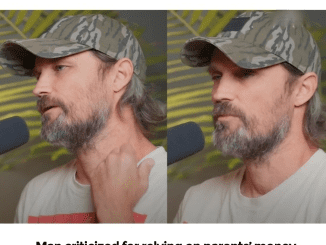Imagine a future where cancer treatments don’t come with the exhausting side effects of chemotherapy or radiation. That future just got closer, thanks to an extraordinary scientific advancement out of Sweden. Researchers at the Karolinska Institutet have developed a tiny DNA-based nanorobot that can kill cancer cells with pinpoint accuracy, leaving healthy tissue completely untouched. Sounds like science fiction? It’s very real—and incredibly promising.
The Science Behind the Nanobot: DNA Origami in Action

At the heart of this innovation is a technique called DNA origami—a nanotechnology method that allows scientists to fold strands of DNA into precise, 3D shapes at the nanoscale. It’s like building a microscopic robot using molecular Lego bricks.
Inside this nanorobot, researchers embedded six cancer-killing peptides arranged in a hexagonal formation. But here’s the genius part: these peptides are hidden inside the structure and only get activated in the acidic environment of a tumor.
Why is that important? Because healthy tissue typically maintains a neutral pH level around 7.4, while solid tumors have a more acidic microenvironment, often dipping to a pH of 6.5 or lower. This difference creates the perfect “switch” for the nanobot to only release its payload when it reaches a tumor, keeping healthy cells completely out of harm’s way.
How the Nanobot Targets Only Cancer Cells
This isn’t your average drug delivery system. The nanorobot behaves almost like a stealth assassin, patiently waiting for the right condition—an acidic drop in pH—to reveal its weapons. Once the environment around it becomes acidic, the DNA structure unfolds and exposes the peptides, which then attack and kill nearby cancer cells.
Video : How Nanobots Could Cure Cancer
This conditional activation makes the nanobot incredibly selective. Unlike chemotherapy, which can’t distinguish between healthy and cancerous cells, this method allows the treatment to be precise, minimizing damage and dramatically reducing side effects.
Animal Trials: A 70% Reduction in Tumor Growth
To test the nanobot’s effectiveness, scientists used a mouse model with breast cancer. The results? Absolutely mind-blowing.
Mice treated with the active DNA nanorobot experienced a 70% reduction in tumor growth compared to those treated with an inactive version. And the best part? There were no signs of damage to surrounding healthy tissues.
This marks a significant step forward. While the results are still in the early stages and limited to animal testing, they lay the groundwork for what could become a new standard in cancer therapy.
Why This Matters: Fewer Side Effects, More Hope
If you or someone you love has undergone chemotherapy, you know how devastating the side effects can be—nausea, fatigue, hair loss, immune suppression. These occur because chemo attacks all fast-dividing cells, not just cancer.

This nanobot offers a radically different approach. By triggering its destructive mechanism only in acidic, cancerous environments, it leaves the rest of the body alone. That means less collateral damage and potentially a much higher quality of life for patients.
In the future, cancer treatment may no longer be a choice between saving your life or maintaining your well-being—it could be both.
What’s Next: Precision Targeting and Human Trials
The team behind the nanobot isn’t stopping here. Their next goal is to improve the nanorobot’s targeting precision even further. They plan to add molecular “address labels” that will bind only to specific cancer types, like lung or pancreatic cancer, making the therapy even more focused.
Before moving to human clinical trials, researchers also want to understand long-term effects and any possible immune system responses. While the nanobot’s mechanism is promising, safety and efficacy must be confirmed across a larger range of conditions and cancer types.
The Bigger Picture: Nanomedicine is the Future
This breakthrough isn’t just about one robot or one type of cancer—it signals a paradigm shift in how we treat disease. With nanomedicine, scientists are building tools that can operate at the cellular level, performing tasks that were previously impossible.
Video : Cancer-Fighting Nanobots Are Revolutionizing Healthcare!
Think of it like this: instead of using a sledgehammer to break down a wall (traditional chemo), we’re now using a smart, microscopic drone that can sneak into a building, find the exact room it needs to destroy, and complete the job with surgical precision—without touching anything else.
That’s not just revolutionary. That’s the future of medicine.
Conclusion: A Promising Step Toward Smarter Cancer Treatment
The development of this DNA-based nanorobot is more than a medical milestone—it’s a symbol of hope. For millions of people affected by cancer each year, it represents the possibility of safer, smarter, and more targeted treatment. It’s a future where therapy doesn’t come with a heavy price. A future where medicine is as precise as it is powerful.
And while there’s still more work to be done, one thing is clear: this is one small robot for science, one giant leap for humanity’s fight against cancer.


